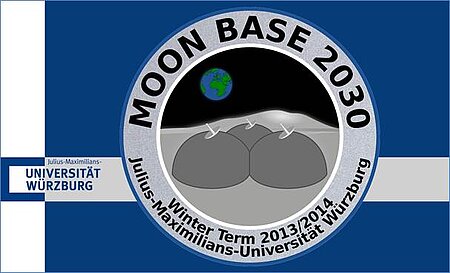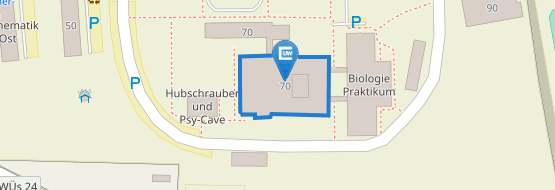Moon Base 2030
Torbjørn Cunis, Wendelin Fischer, Florian Gillmann,
Max van gen Hassend, Christina Hempfling, Frederik König,
Helge Lauterbach, Helge Mohn, Dennis van der Wals,
Kai Werner, Tobias Wenzel, Martin Wißmiller
MOON BASE 2030

JULIUS-MAXIMILIANS-UNIVERSITÄT WÜRZBURG
CHAIR OF COMPUTERSCIENCE VIII
AEROSPACE INFORMATION TECHNOLOGY
PROF. DR.-ING. HAKAN KAYAL
Preface
Years have passed, since the last human left our Earth’s naturally satellite, the Moon. For many years, engineers have been dealing with the idea of return. However, NASA canceled their Constellation Program in 2010: The lunar revival is too expensive.
In 2013, a team of twelve Computer Science and Aerospace Engineering students studied a potential manned lunar base, scheduled to the year 2030 of human return. While Constellation was not the first, our study will not be the last. But, a long-term project like the manned base on Moon is driven by one single notion – while driven by many new approaches and managed by humanity. This report shall record our ideas, our assumptions and concepts, our results and experiences. Ideally, it is a small but further step to the Moon.
The project MOON BASE 2030 took the winter term 2013 and a vast amount of our time. We investigated the lunar environment and looked for past, current, and future technologies; while some of the solutions presented in this study have been well-tried in aerospace missions, others have still experimental character on Earth, too. By and by, a couple of individuals became a team, and neither technical difficulties nor drawbacks have prevented us from presenting at all: Our lunar base vision.
I would like to thank Prof Hakan Kayal for the supervision of our project, for the instructions and guidance through the term, and for his experiences about planning and operating aerospace projects and missions. Notably, I wish to thank the University’s Library of Würzburg and its team, who shortly acquired a couple of related literature. Finally, I thank my team, Christina, Dennis, Florian, Frederik, Helge and Helge, Kai, Martin, Max, Tobias, and Wendelin; you did a great job, despite challenges, trouble and circumstances. Thank you!
Torbjørn Cunis
February 13, 2014
Motivation
by Kai Werner
The Moon is an ancient dream of humanity. But, after the APOLLO missions have been finished more than fourty years ago, no human has ever been there again. Today, the Moon, and the Mars, are in the focus again and may be soon visited again. The general motivation for visiting the Moon will be more detailed in chapter 1. In view of the above, Prof. Kayal of the Chair of Aerospace Information Technology offered a students project to design a complex space system going beyond simple components. The objective was to work out the concept of a manned base on the Moon, including motivation and objectives, using technology already available or assumed to be available during the next twenty years.
Research Group
by Kai Werner
This paper was written by twelve students of Space Science and Technology or Computer Science at the University of Würzburg within the lecture "Entwurf von planetaren und orbitalen Basen" as part of the respective Master’s curriculum during the winter term 2013/2014. The lecture was estimated to require about 150 h per student. Therefore, the extent of the project was limited to about 1800 h of work. The project was supervised by Prof. Dr.-Ing. Hakan Kayal, but the students were expected to work autonomously and Torbjørn Cunis was declared project manager. The project was divided into workpackages resembling the chapters of this paper and distributed on the students as noted in the respective chapters. Kai Werner was responsible for the schedule of the project and the documentation in this report. To accomodate for possible international publishing, English was chosen as the language for written reports and this report. This paper was written in LATEX and is based on the Tufte-style [36].
This style features a particularly large margin and was chosen to place additional information and smaller tables or graphics in the margin without hampering the flow of reading the main text. The project has been finished in two iterations of about six weeks each. The second iteration has been started over again, to fix fundamental errors which may have crept into the project in the first iteration and were discovered too late or were to much depended on by further work to fix easily in the first iteration. This report and a final presentation were finished in another three weeks.
Accomplished Goals
by Frederik König
New concepts and technologies for a lunar base have been regarded like 3d-Printing with regolith, combined usage of existing energy technologies, advanced robotics and automation, etc. The scientific research in the different sub packages has shown that a lunar base is difficult but an achievable venture. But we have to consider, that technological ideas need to be tested in reality. Despite of all the planning there is still the possibility for unknown effects. A closed bioregenerative system as supposed in this study for example has never been tested under environmental conditions as on the moon. The proof of concept will be provided at the time when the system is operational and stable for a longer period of time. This is caused by the fact, that not every system is fully observable. There is also the possibility for rediscussed and undiscovered problems because not every aspect could be regarded in detail in this study. So the goal of testing technology is fulfilled when the base is built and running. This study has shown that the following sub goals are achievable with existing technology and therefore they are accomplished:
- it is logistically possible to transport the required materials to the moon
- it is possible to build-up a lunar base
- it is logistically possible to supply a lunar base
- it is technologically possible to run a closed environment if closed means that some supplies like nitrogen are allowed
- it is technologically possible to gather the required resources for a human habitat, running the base and to do scientific research Providing a science laboratory in a unique environment for experiments in physics, chemistry, biology, geology, physiology and
Outlook
by Kai Werner
As already reiterated in chapter 14, most of our objectives could by Kai Werner be fulfilled. Some assumptions will have to be confirmed by further research. The structure and composition of regolith will have to be further investigated to confirm the assumptions in how it will perform in sintering buildings. The structural engineering will have to detailed and confirmed. The development of an actual, working building structure with the corresponding effects on human inhabitants on the Moon will have to continue. Energy Storage is still in development and should be monitored during the next years. We know that there is water on the Moon, and we can safely assume that there will be craters filled with it. The exact quantities and distribution in the craters will have to be cartographed and proper routes from base to mining site will have to be checked again as soon as better maps of the Moon Surface are available. Most of the technologies used in Logistics or Surface Transport are still in development and may very well change specifics or even abandoned till 2030. Many of the assumptions can only be proven on the Moon itself, and exploration will have to continue. Altogether, this report presents a viable first step towards a lunar base and many more will follow.
Final word
by Hakan Kayal
As a result of the project work, a document of 215 pages has been written, which was successfully presented on 165 pages. The English version of the MOON BASE 2030 Report (TR number 497, 215 pages) can be downloaded here.
For further information contact:

